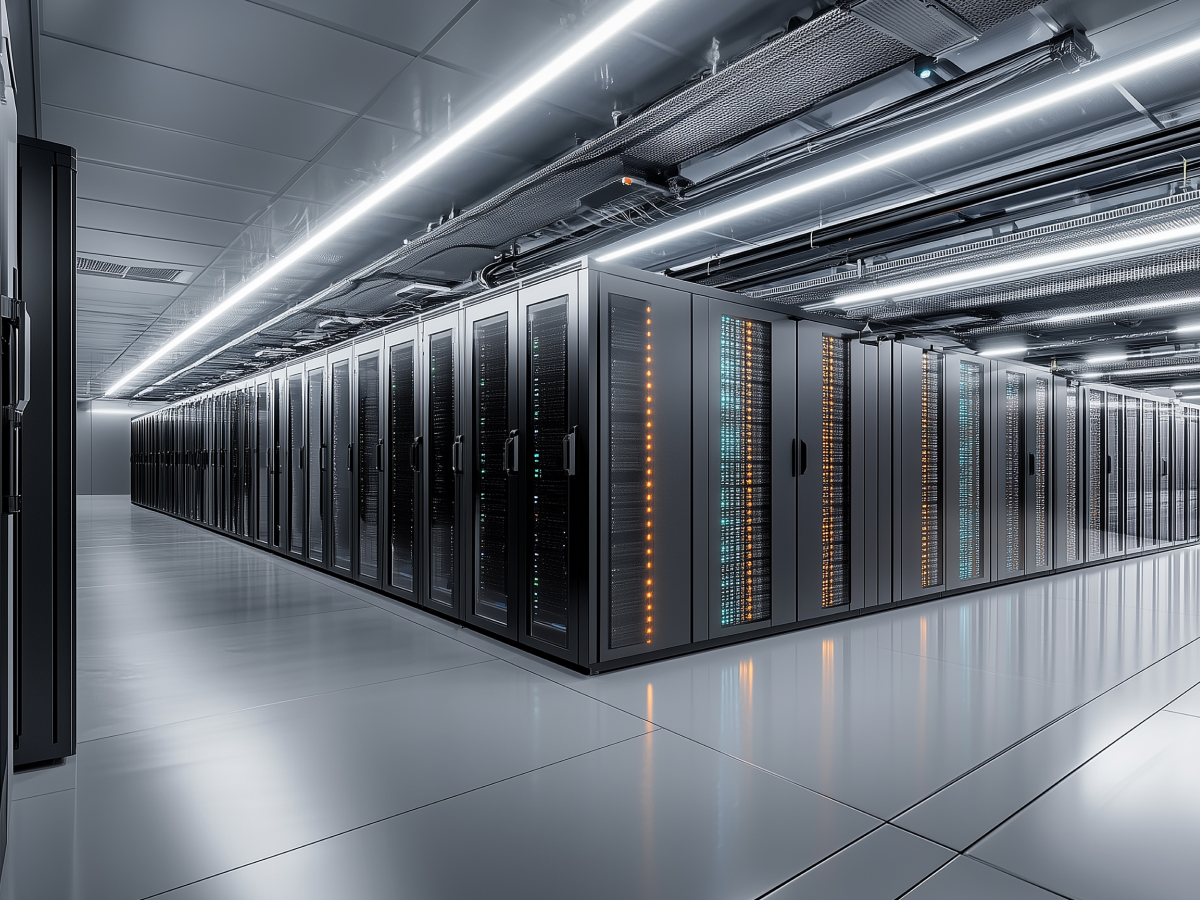AI’s rapid code generation creates production-readiness challenges
AI is writing a lot of code. That’s good in terms of output, but the picture isn’t that simple. In 2024, AI generated an estimated 256 billion lines of code, roughly 41% of what’s currently being written. Even Google reports that about 25% of their code is now produced by machines.
This looks impressive, but volume and value are two different things. The truth is, just because the code is written doesn’t mean it’s ready for production. AI still often gets things wrong, using unsupported libraries, violating build rules, or introducing subtle logic errors that aren’t obvious at first glance. And when AI code hits production, those “small” issues quickly turn into real problems.
Senior engineers across the industry are seeing the same pattern. According to a recent survey of 500 engineering leaders, 59% of them report errors in AI-generated code more than half the time. 67% say they actually spend more time debugging this code compared to fixing their own. That’s the bottleneck we’ve traded for speed, and we need to address it if all this generative power is going to pay off.
C-suite leaders need to know this: faster is not always better if the output compromises quality and slows down final delivery. Production-readiness is the end goal, not just volume, and definitely not just code that “looks right.”
Evolving developer roles emphasize oversight and quality assurance
The idea that AI would replace developers is outdated. What’s actually happening is this: AI is shifting the developer’s role. They’re no longer just coding, they’re supervising, guiding, and improving the code machines write.
Developers now spend more time reviewing and validating AI output. As Marcus Eagan, CEO of NativeLink, put it, “agents have minds of their own,” which means developers have to monitor for behavioral drift between what code does in a test environment and how it behaves in production. That’s not trivial, it requires people who understand the system end-to-end.
The data backs this up. The same survey of 500 engineering leaders found that 68% are putting in extra effort just to fix security issues auto-generated by AI tools. Debugging AI work is more time-consuming because engineers aren’t just fixing errors, they’re trying to understand decisions made by a model that doesn’t explain itself.
That means we’re not reducing headcount, we’re shifting the focus of developer effort. We still need technically skilled people, but we now need them focused on quality assurance, testing, system integration, and security more than ever. These tasks are harder, not easier, and they’re key to making all this AI-generated output actually useful.
Executives should plan accordingly. AI gives us leverage, but only if it’s deployed with a strong layer of human refinement. That’s not waste, it’s what gives machine output its value.
Emergence of AI-enhanced tools improves validation of code quality
AI is not just writing code, it’s now helping validate it too. Several purpose-built tools have entered the scene, designed to clean up the issues introduced by generative code engines. These include static analysis tools, bug detectors, security scanners, and test generators, all updated to handle the unique traits of machine-generated code.
Platforms like SonarQube and Snyk now use their own AI to pinpoint vulnerabilities and bugs in code written by other AI tools. They don’t just detect issues, they also apply fixes before the code is merged. That saves engineering teams time and cuts risk before it reaches production. Diffblue Cover is another strong example. It generates unit tests for Java code and has been shown to do it up to 250 times faster than manual testing.
Marcus Eagan’s company, NativeLink, supports this effort too. They’re helping teams speed up their build infrastructure by cutting long compile and run times, turning what used to take days into hours. This matters when AI systems are generating thousands of lines a day. You need infrastructure that keeps up.
For executives, the takeaway is simple: if you’re using AI to write code, you need tooling to govern it. AI needs a second layer of AI, not to replace developers, but to give them more time to focus on strategic priorities. Look at the tooling as part of a broader system that ensures code quality doesn’t collapse under the momentum of volume output.
Strategic workflow adaptations are essential for managing AI-Driven code
AI won’t adapt to your processes, you need to adapt your workflows to AI. That means clear structure around how, when, and why AI-generated code gets used. Taking shortcuts here leads to long-term problems, especially when speed overshadows security or compliance.
The right approach begins by treating AI-generated code as a first draft, not production-ready material. Every line should be reviewed by a senior developer or a code owner before deployment, same way you’d treat work from a new team member. Add static code analysis, linting, and security scans into your continuous integration pipelines, no exceptions. Tools like ESLint, SonarQube, Bandit, or Snyk can catch key issues before they impact production systems.
You also need clear usage policies. Define where AI tools are allowed, generating boilerplate is fine, handling business-critical logic is not. Tag AI-generated code in pull requests. This makes it easier to spot where extra scrutiny is required, and it handles transparency and licensing concerns from the start.
Business leaders should implement these policies at scale. This work isn’t overhead, it’s structure. It gives your team confidence and clarity when engaging with AI tools. If AI is going to stay in your development process, and it will, then structure and review workflows are what will determine its effectiveness. Without them, you’re not managing AI, you’re reacting to it.
Upskilling developers for AI literacy is crucial in a hybrid coding environment
AI is changing how software gets written, which means developer skills must evolve. It’s no longer just about writing good code, it’s about understanding code generated by an unpredictable machine. Teams need to build what’s effectively an “AI literacy”: the ability to evaluate, fix, and secure AI-generated outputs without assuming they are correct.
AI tools like GitHub Copilot are improving, but they don’t understand context like a human does. That leads to code that might function but lacks reliability, security hygiene, or long-term maintainability. Developers must become stronger in areas like secure coding practices, threat modeling, and systematic debugging. When AI inadvertently introduces vulnerabilities, such as SQL injections or memory handling flaws, teams need to catch and resolve them before that code runs.
Also critical is embedding strong testing practices. Developers should think in terms of writing test logic alongside any AI-assisted code. Unit tests, integration scenarios, test coverage metrics, these safeguard your systems by forcing AI outputs to pass measurable gates.
For executives, this shift calls for targeted investment in training and team development. Upskilling isn’t optional when AI enters your build process; it’s the only way to protect the reliability and security of your engineering workflows. Developers equipped with the right mix of judgment, automation familiarity, and secure development mindset will give your organization a real operational advantage.
The future trajectory of AI points toward greater automation with continued human oversight
The direction is clear: AI will automate more of the code lifecycle. We’re already seeing early forms of this in systems like GitHub Copilot, Amazon CodeGuru, and Sourcegraph Cody, which handle everything from code suggestions to bug detection, test generation, and pull request analysis. Some tools, like E2B, offer secure test environments that execute AI-generated code in isolated environments before any human touches the output.
Projects like Zencoder push this even further with multi-agent systems. These setups delegate tasks across several specialized AI agents, writing, validating, testing, and integrating code. Over time, this could mean less developer effort spent on routine integration or validation stages.
But automation doesn’t eliminate the need for human oversight, it amplifies it. Developers will define rules, test boundaries, review final outputs, and ensure that the software aligns with business priorities. They’ll debug exceptions that fall outside what AI systems can handle and guard for edge cases still beyond machine reasoning.
For C-suite leaders, this means planning strategically. Adopt AI systems that reduce engineering time, but always balance that with clear workflows and human checks. Pilot automation gradually. Review outcomes systematically. Let AI handle scale, but rely on people to drive the precision. That combination is what moves development forward without compromising quality.
Key highlights
- Fast code, slower delivery: AI now produces nearly half of all code, but production readiness lags due to errors, unstable dependencies, and logic flaws. Leaders should account for increased QA time when adopting generative coding tools.
- Developer roles are evolving: AI shifts developer focus from writing code to reviewing, debugging, and securing it. Executives should invest in roles and workflows that prioritize oversight and system stability.
- Tooling is essential: AI-powered validation tools like SonarQube, Snyk, and Diffblue Cover are critical to catching bugs early and accelerating testing. Leaders should integrate these solutions into CI/CD pipelines to manage AI-generated output at scale.
- Workflow policies reduce risk: Proactively define where and how AI-generated code should be used, reviewed, and labeled. Clear guidelines protect code quality and ensure IP, compliance, and security standards are met.
- Teams need AI literacy: Developers must be trained to catch AI-introduced vulnerabilities, write effective tests, and debug unfamiliar code. Upskilling in secure and test-driven development should be a leadership priority.
- AI is scaling fast, but oversight still matters: Multi-agent AI systems can automate more of the build and review cycle, but humans remain essential for defining quality parameters and final validation. Leaders should pilot automation thoughtfully while maintaining engineering accountability.





